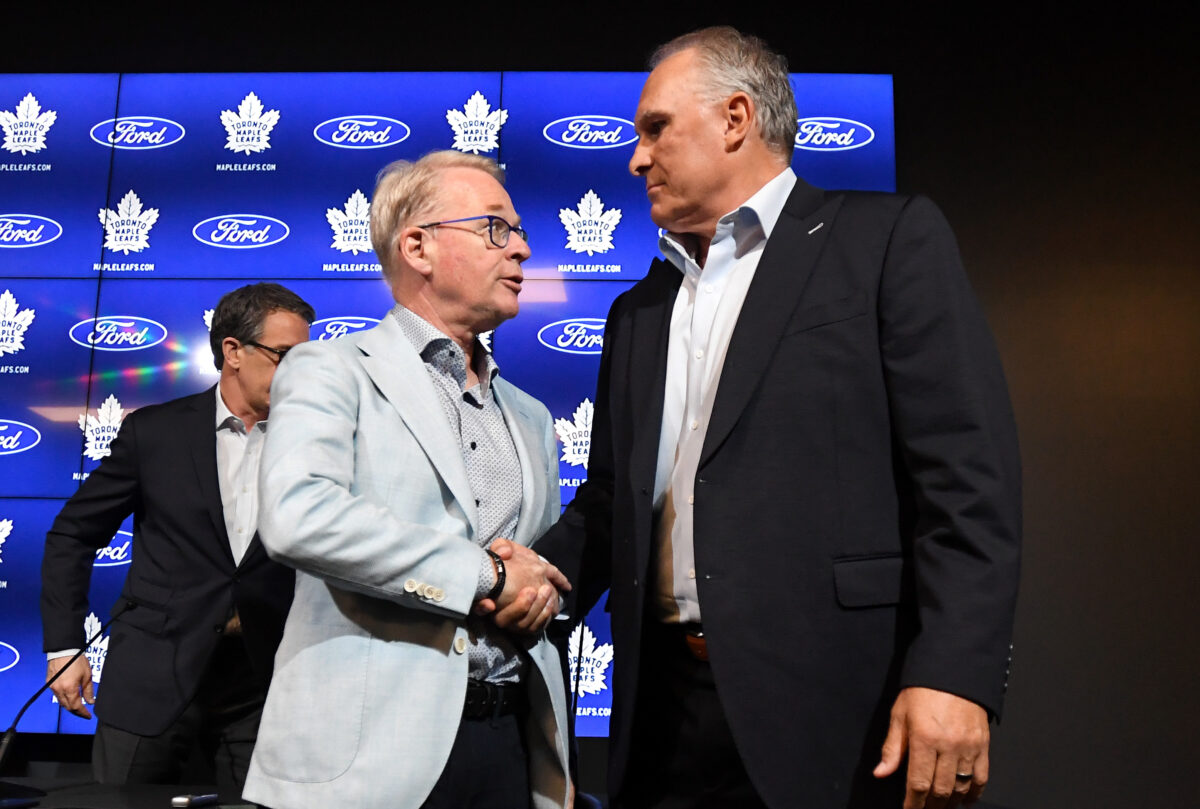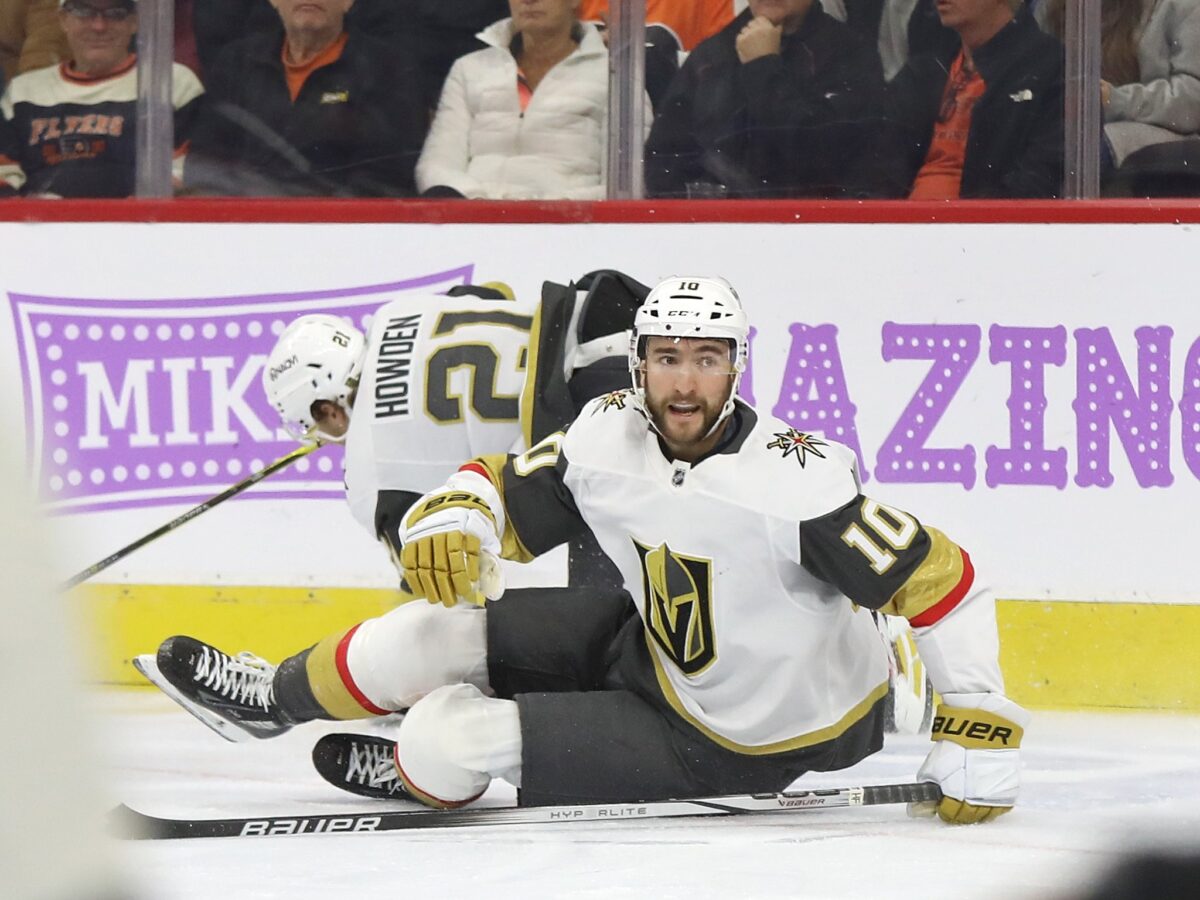The Toronto Maple Leafs head into the 2025–26 season in a different place than they’ve been in years past. Instead of making minor tweaks or bargain-bin signings, the organization has taken on a new philosophy—one that reflects a deeper alignment between the front office and the coaching staff. With Craig Berube now firmly in place behind the bench, and with Brad Treliving continuing to shape the roster, there’s a sense that Toronto’s identity is shifting toward a harder, more balanced style of hockey.
Related: Auston Matthews Is Convinced That the 2025-26 Maple Leafs Are a Great Team
This transition hasn’t gone unnoticed by fans or media. The Maple Leafs have long been criticized for being too top-heavy, overly reliant on their stars, and lacking the grit and depth necessary to navigate the grueling demands of the playoffs. The early moves this offseason suggest that those criticisms are finally being addressed. Whether or not it leads to better results come spring remains to be seen, but for now, there’s an optimism that this group is being built with more purpose.
Item One: Craig Berube’s Fingerprints Are All Over the Maple Leafs’ Offseason
One of the most significant shifts in Toronto this summer isn’t just in the roster—it’s in the philosophy behind how it’s being built. Head coach Berube is clearly having an imprint on the Maple Leafs’ makeup, and that’s by design.

As Maple Leaf Sports & Entertainment president and CEO, Keith Pelley explained after parting ways with Brendan Shanahan, Berube will be more involved in shaping the team. “I’m a firm believer that the coach has to be involved more than just on the day of the game and in the dressing room,” Pelley said. “I have my utmost confidence in Brad (Treliving) and my utmost confidence in Craig.”
Related: The Maple Leafs Aren’t Done Feeling the Marner Fallout
That philosophy is already evident. This offseason, general manager Treliving didn’t just add character veterans to keep things light in the locker room. Instead, the new signings reflect the hard-edged, competitive style Berube has long valued. The message is clear: Toronto’s roster is now being built with the coach’s identity in mind.
Item Two: Maple Leafs Shift from Stars-and-Scraps to Balance and Depth
The Maple Leafs’ offseason has marked a real turning point. Instead of building around a handful of stars and then filling the rest of the roster with bargain-bin depth, Treliving has shifted toward a more balanced lineup. Auston Matthews and William Nylander remain the offensive engines, with Matthew Knies now firmly part of the core following his six-year extension. But the strategy has changed—this year’s roster moves show an attempt to surround the stars with legitimate, serviceable players rather than cast-offs.

The additions of Matias Maccelli, Nicolas Roy, and Dakota Joshua reflect that philosophy. Maccelli, still just 24, brings offensive upside and playmaking skill, even if last season was a step back. Roy and Joshua, on the other hand, add size and a heavier forecheck—elements Toronto fans have long argued were missing when the postseason arrived. None of them are game-breakers on their own, but together they represent a shift toward depth and reliability in the middle of the lineup.
Related: Maple Leafs & Matthews Remain Focused Without Marner
Ultimately, the question remains: are the Maple Leafs better? From a pure skill standpoint, maybe not dramatically. However, the changes signal something more significant—a cultural shift away from being overly top-heavy and susceptible to exploitation in the playoffs. If this group gels, Toronto will have more lineup flexibility, more ways to play, and fewer weak spots when it matters most. That alone makes them better positioned for the long grind of the 2025–26 season.
Item Three: Is Easton Cowan Ready for the NHL—or Headed to the Marlies?
Easton Cowan is one of the Maple Leafs’ most intriguing young forwards. Still, the question remains: is he ready to leap straight into the NHL, or would a season with the American Hockey League’s (AHL) Toronto Marlies be the more intelligent move? At 5-foot-11 and 185 pounds, Cowan isn’t small by hockey standards, but he does come in slightly under the NHL average size. Players in his range often face one of two paths—either they struggle early on adjusting to the physicality, or they stand out due to elite skill and a relentless motor.

The good news for the Maple Leafs is that Cowan seems to have the tools to overcome any concerns about size. His game is built on tenacity, vision, and constant pressure on opponents. He has that nonstop engine that coaches love, paired with enough skill to drive play and create scoring opportunities. The challenge for Toronto, however, is finding the right roster fit. With a logjam of forwards at the NHL level, Cowan may be better served starting with the Marlies, where he’d likely play big minutes in all situations. That development path could give him the confidence and seasoning to transition smoothly when the Maple Leafs call him up. [For what it’s worth, I’m betting on him making the opening night lineup.]
What’s Next for the Maple Leafs?
The Maple Leafs’ most significant test will be translating these offseason changes into tangible playoff results. Regular-season success is nothing new for this team, but fans and management alike are desperate for deeper runs in the spring. Berube’s influence, the shift toward roster balance, and the development of prospects like Cowan will all play crucial roles in whether Toronto can finally break through.
Related: Ex-Maple Leafs’ Defenseman Jake Gardiner: Where Is He Now?
In the short term, training camp and preseason will provide the first real peek of how these changes come together. Can the new additions carve out meaningful roles? Will Berube’s system be embraced quickly? And can a young player like Cowan push his way onto the roster? These are the questions that will define not only the start of the season, but potentially the Leafs’ trajectory for years to come. For now, there’s cautious optimism in Toronto—backed by the sense that this time, the changes might actually stick.
